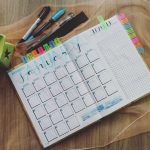Whether you are a parent, a teacher or a student – every day, all of us have to memorize something new. It can be like a new language, debating, finding the square root of a number, how to play piano, etc. Our cerebrum is constantly evolving with new information.
Obviously, learning new abilities can be disappointing and tedious. However, if we say that there are techniques to memorize things fast and easy, isn’t it will be great?
Keeping the above notion in mind, let’s have a look at the top 5 ways to memorize anything fast and easy.
Table of Contents:-
Memory Palace:
A memory palace is defined as an imaginary place where one can store any kind of information, and a memory journey is a way through that location. This memory journey consists of several stops, stations or loci where one decides to put their information.
Let’s see how one can create a memory palace:
Step 1
The first step is to discover some new locations where you have never gone to. It can be anything like a street, a building, a park, a room, etc.
Stroll around your chosen location multiple times, click some pictures if you want. Now go to a silent place; get comfortable; close your eyes and try to imagine the whole place.
It is not important to get in much detail, you simply should have the option to orient yourself, and “investigate” the entire spot in your brain. If you are not able to do this repeat the step.
Note – This step is only important if you’ve utilized all the spots you can recollect. If your head still contains some locations then this step is not necessary to start with. You can just proceed with the second step.
Step 2
Whenever you are relaxing just imagine that location again in your mind. Think of all the routes that you took to explore that place.
It should have a starting as well as an ending point. Cover that route a few times forward and backward. If you are not comfortable with it, change it.
If you are good with it, proceed with the next step.

Step 3
This step is about deciding your loci (locations, stops or stations) where you are going to put your information. Each of your loci should be unique.
Basically, a locus is a picture and each of them must be unique otherwise you will confuse your mind. Now start your memory journey and give numbers to each of your loci with the starting point as Locus#1.
When you get to the end, return and go over all the spots you picked, to make sure that you are viewing those loci in the same fashion as you did earlier.

Step 4
Now suppose you have a list to remember. Let’s say, the list consists of 26 items numbered from 1 to 26. Keep each of them at different loci and make a story out of it.
Repeat this step 2 to 3 times. You have now memorized the list!!
Mind Map:
If you want to memorize something for long term, memory palace is a much impressive option. However, we have got something that is much simpler and more pragmatic than the memory palace.
It is about constructing a mind map.
A mind map helps in combining verbal as well as visual information in a simpler way. This method provides an added benefit of finding the gaps present in the knowledge of a person.
People often face trouble recollecting what they read in a book. The reason behind this is quite simple: they are neither encoding nor retrieving the information effectively.
You will see that readers generally use highlighters to underline the statements they want to recall in a book. This is useless most of the time.
Rather than going with this, it is beneficial to construct a mind map.
Let’s see how one can set up a mind map.
Keep the book’s title in the middle. Make a branch for each chapter.
Go through the chapter and make an additional branch for each argument present in that chapter.
Every writer is trying to give a message; they are attempting to make an argument. Effectively recreate the writer’s argument as you read along and you will recall the book significantly in a better way.
The Baker/Baker Paradox:
Let’s understand this paradox with the help of an example.
Suppose you have gone to a party and you meet two people. Let’s call them Person A and Person B. Person A is comfortable to share his name but Person B is comfortable to share only his occupation.
After talking to them you came to know that the name of Person A is Mr. Baker and Person B is a ‘baker’ by profession.
After 2 to 3 days there is a very high chance of forgetting Person A’s name. However, chances are high to keep Person B’s occupation on the head.
This is a proven fact and is known as the Baker/baker paradox.
The reason behind this is that Mr. Baker, a name, doesn’t form any image in our brain but on the other hand, the word ‘baker’, an occupation forms the image of bread and cakes in our mind.
Thus the latter one is quite easy to remember.
It is clear from the above example that if you want to memorize something for long term then you need to form an image and associate it to the person, place or things.
Memorize Sequences Using Chunking
Check out this sequence of numbers: 5, 6, 7, 2, 4, 3, 8, 1, 9, 0.
Close your eyes and say all of them in sequence aloud. How many is there in your head? Did you get them in sequence? Don’t worry if you are not able to remember these 10 random number, you are not the only black sheep in the herd.
It’s a bit difficult task to remember these random numbers after checking them out for a second or two. However, the task is not impossible and can be done by anyone.
So, in what manner can our mind cause the progress from a string of 10 arbitrary digits to something that we can rehash back easily?
Sometimes, without even knowing it, we are using a short-term memory strategy known as chunking.
Chunking is a process to remember relatively lengthy strings of information in a bit easier way. This method is beneficial to remember something for a short period.
As the name suggests, chunking refers to taking long strings of information, say letters/numbers, and forming smaller groups out of them.
In the above example if you are breaking the 10 digit string into smaller chunks then you will get two groups of 3 digit numbers and one group of 4 digit numbers.
Now you need to remember only 3 groups of numbers which is much easier than remembering 10 separate digits.
Leitner System
Leitner System for recollecting the memory is based on setting up study sessions at regular intervals.
One of the common questions that will arise in your mind is – what will be the time gap between these study sessions? The answer to this depends on the individual, the test date, the difficulty level of the test as well as the time available for preparation.
The Leitner System states that the time gap between each successful study session should be in increasing order. Here, the term successful means you can recollect the information completely and correctly.
Let’s say, you want to recall your knowledge about a certain subject after 1 day, if you find yourself successful then try it again after 2 days, then again after 3, then 6, then 10 and so on.
This is the Leitner hierarchy. You need to optimize this according to your requirements.
Each successful hierarchy strengthens your memory to a greater extent.
Let’s take the above example only. Suppose you were not successful in recalling the information on the 10th day. In this case, you need to reset its position in the hierarchy. You need to take it back to the start and continue the process.
One application for the Leitner System is the I111 Technique.
Hope this article will help you to memorize your learning in a better way and keep them in your brain for a longer period of time.
Which Technique do you like Most?
What are you Going to Implement first?
Was it worth your time?
Please tell your Suggestions/Reviews/Answers in the comment.






1 thought on “Memorize anything quickly using these 5 hacks (2024 Updated)”
Amazing article. Going to implement some techniques.
Thanks for the work